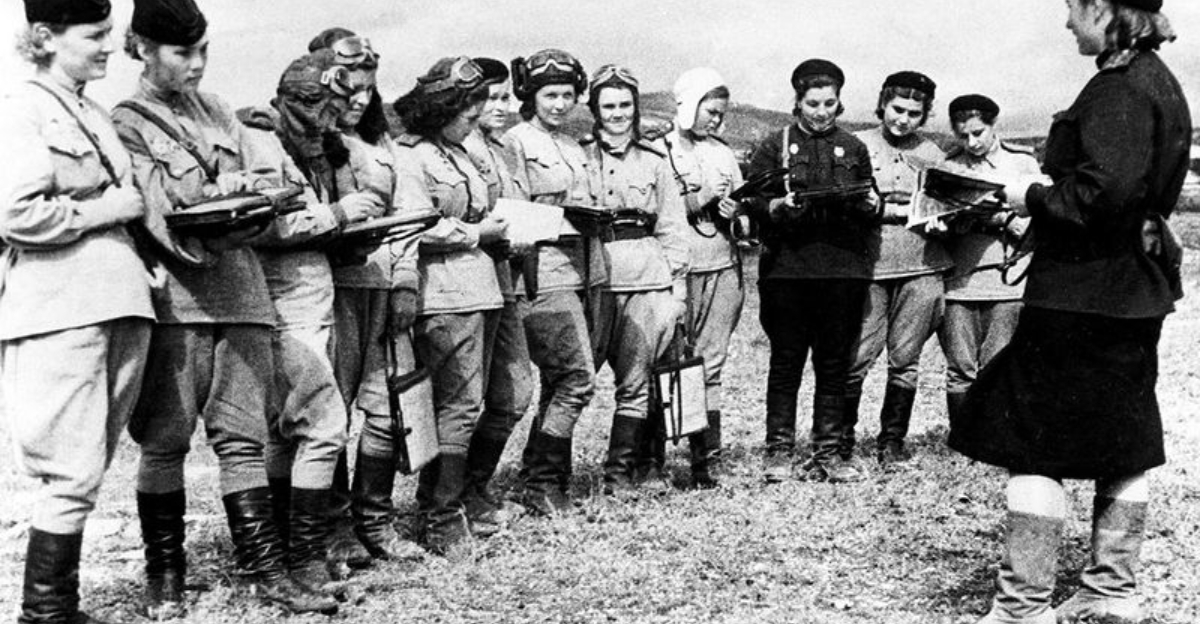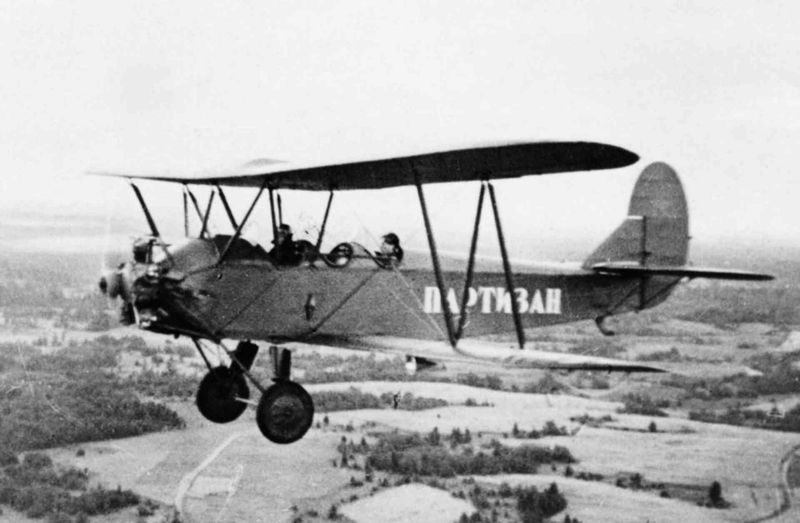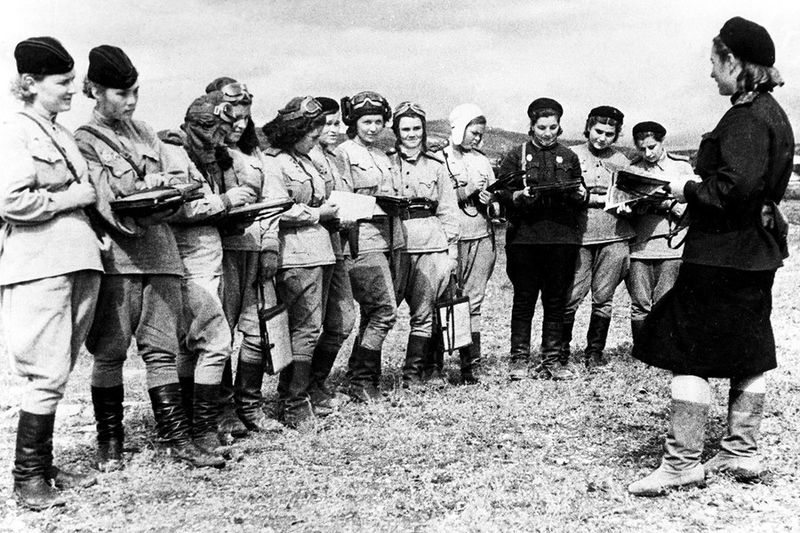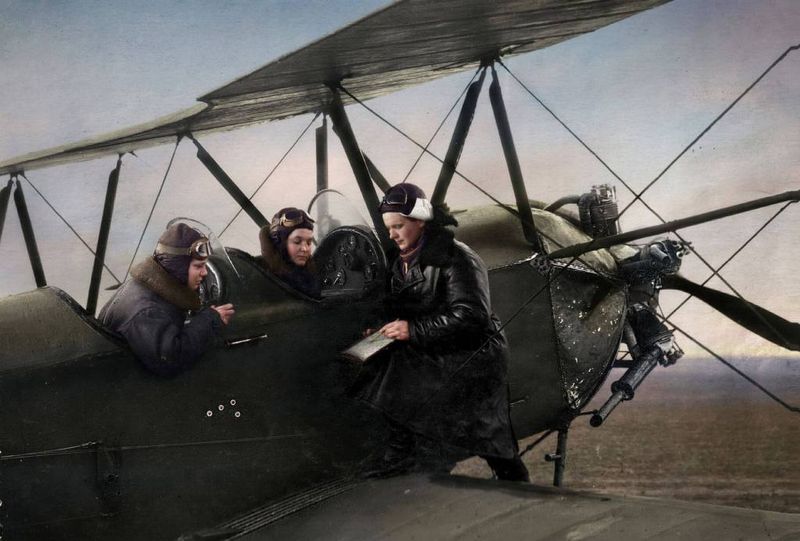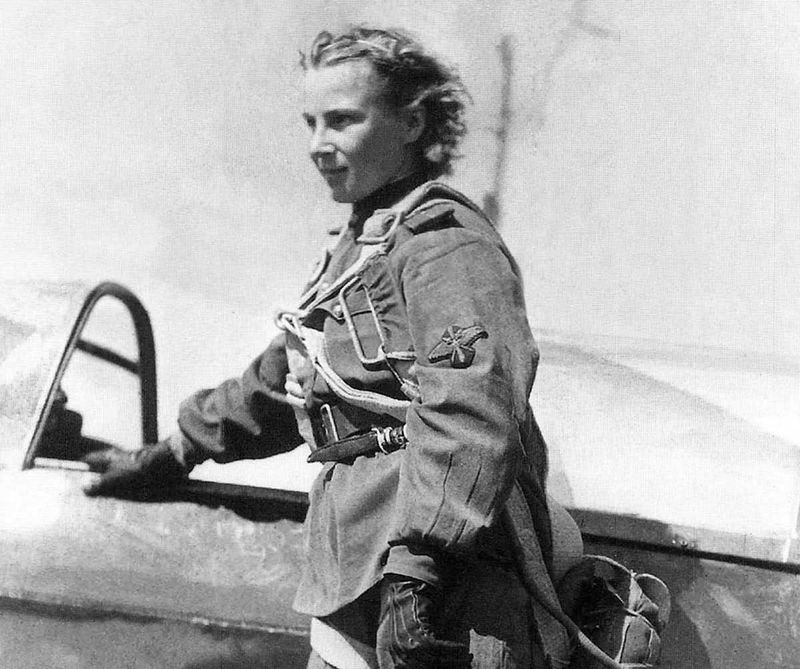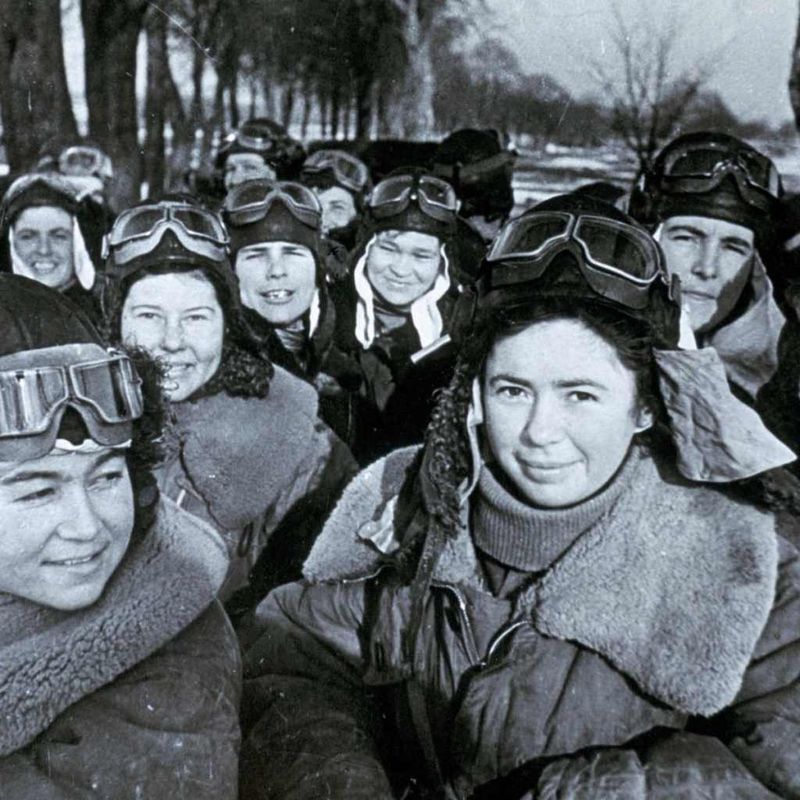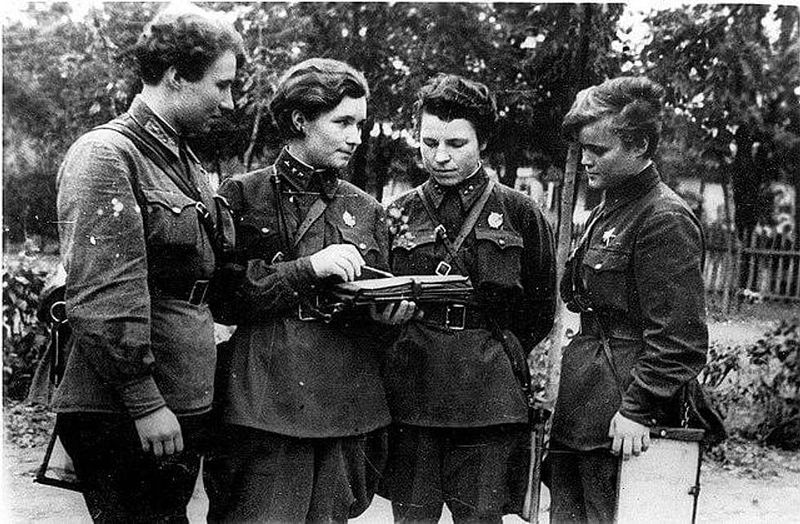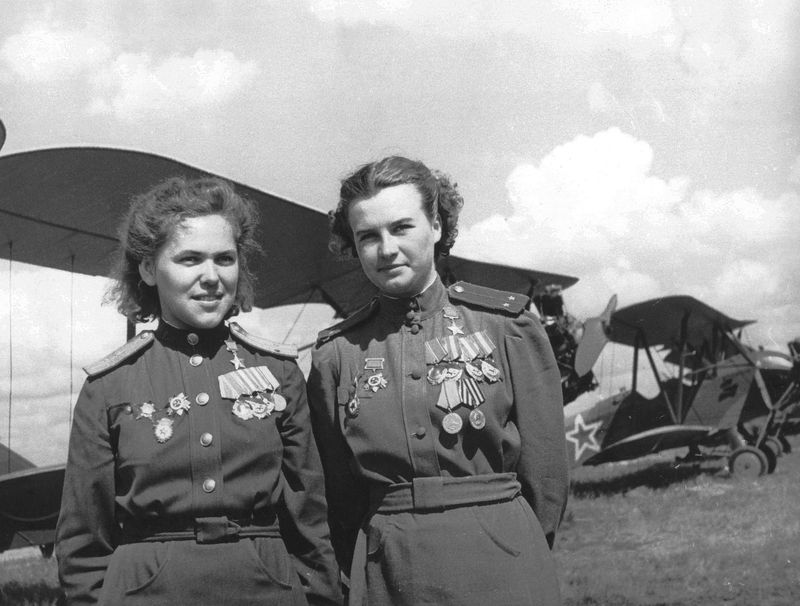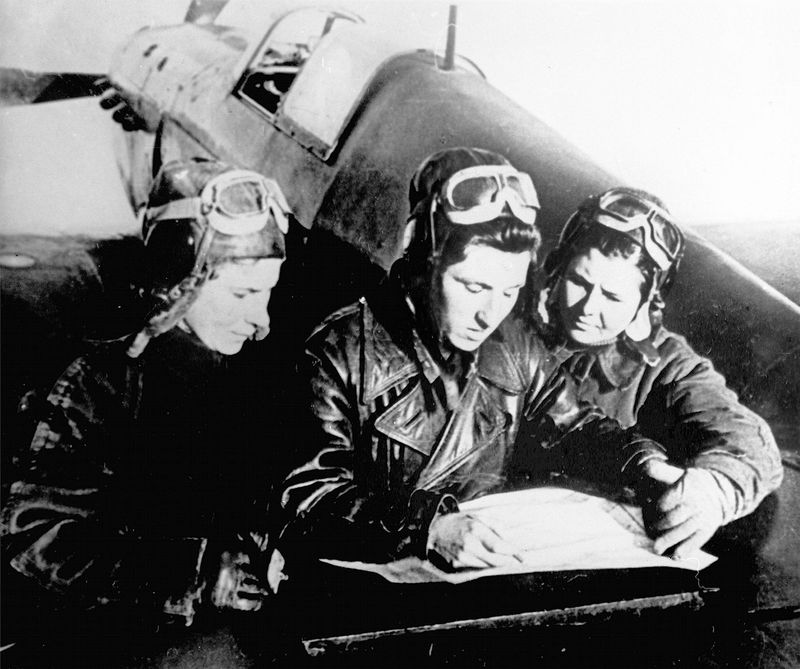During World War II, a regiment of Soviet women pilots took to the skies to fight Nazi forces in rickety wooden biplanes.
These extraordinary aviators, known as the Night Witches, completed thousands of bombing missions under cover of darkness.
Their courage, skill, and determination forever changed the landscape of aerial combat, proving that women could be just as formidable in battle as men.
1. They Flew in Flying Coffins
The Night Witches piloted Polikarpov Po-2 biplanes, outdated crop-dusters made of canvas and wood that were never designed for combat. These fragile aircraft lacked even the most basic equipment—no radios, no parachutes, and no brakes. What they did have were bombs strapped to the wings and the sheer audacity of their pilots. The open cockpits exposed them to freezing winds and enemy fire, while the flimsy frames could be punctured by a single bullet. German pilots mockingly called these aircraft ‘sewing machines’ for their distinctive rattling noise, but the Night Witches transformed these primitive planes into deadly weapons against all odds.
2. Their Name Came from a German Nightmare
German soldiers huddled in terror at the distinctive swooshing sound that preceded deadly bombing raids. When Night Witch pilots approached their targets, they would cut their engines and glide silently before releasing their payloads, creating an eerie whooshing noise reminiscent of a witch’s broomstick. The terrified Germans dubbed them ‘Nachthexen’—Night Witches—a name the women proudly embraced. The psychological impact was so profound that any German who shot down one of these female pilots automatically received an Iron Cross medal. The women themselves found dark humor in their nickname, sometimes even making spooky ‘cackling’ noises over enemy positions to heighten the psychological warfare.
3. They Turned Weakness Into Weapon
The Night Witches’ ancient biplanes flew at a maximum speed of just 94 mph—slower than the stall speed of German fighters! This seemingly fatal disadvantage became their secret weapon. Enemy pilots attempting to match their slow speed would stall and crash. Marina Raskova’s aviators mastered the art of cutting engines mid-flight, gliding silently toward targets before releasing bombs, then restarting engines and vanishing into darkness. This ‘idle-engine’ technique meant German soldiers heard nothing until explosions rocked their positions. Their canvas-covered planes barely registered on radar, and their low-altitude approaches kept them beneath detection equipment, making these women virtually invisible predators in the night sky.
4. 23,000 Missions—Each One a Suicide Risk
Between 1942 and 1945, the Night Witches completed an astonishing 23,000 combat missions. Each night, pilots would fly 8-15 sorties, returning to base only to reload bombs before taking off again. The regiment dropped over 3,000 tons of explosives on Nazi forces. Irina Sebrova, one of the most decorated pilots, completed 1,008 missions herself—an almost unbelievable feat. The women operated in groups of three: two aircraft would draw enemy fire while the third would sneak in to drop bombs. Missions continued regardless of weather conditions. Through blizzards, thunderstorms, and fog, these women flew without modern navigation equipment, relying only on compasses and their extraordinary night vision.
5. The First Woman to Shoot Down an Enemy Plane Was a Night Witch
Lydia Litvyak, nicknamed ‘The White Rose of Stalingrad,’ became history’s first female fighter ace. At just 21 years old, this fearless Night Witch claimed 12 solo victories and 4 shared kills against German aircraft, flying over 66 combat missions. With a white lily painted on her plane’s fuselage, Litvyak became a legend among both Soviet and German pilots. Her signature move—approaching enemy aircraft from below in their blind spot—proved devastatingly effective against superior German fighters. Tragically, she disappeared during the Battle of Kursk in 1943. Her remains weren’t discovered until 1979, and she was posthumously awarded Hero of the Soviet Union in 1990, ending decades of speculation about her fate.
6. They Endured Extreme Conditions
Night Witch pilots braved the brutal Russian winter in open cockpits where temperatures plunged to -40°F. Their faces would freeze to their oxygen masks, and they’d have to be physically pried off after landing. Frostbite was so common that many suffered permanent tissue damage. Some pilots flew barefoot to maintain better feel of the rudder pedals through numbing cold. Others stuffed their boots with hay and newspapers for insulation. The planes’ wooden frames would contract in the extreme cold, causing alarming creaks and groans throughout each flight. Pilots often returned with their hands frozen to the control stick, needing warm water to separate flesh from metal before they could exit their aircraft.
7. Their Uniforms Were Hand-Me-Downs
The Soviet military never designed uniforms for women, forcing Night Witches to wear oversized men’s gear. Boots several sizes too large were stuffed with newspapers and rags to keep them from falling off mid-flight. Pants and jackets hung loosely, requiring creative alterations with whatever thread was available. Despite these challenges, the women maintained their femininity. Many wore scarves beneath their helmets or kept flowers in their quarters. Some even applied perfume before missions—a small act of defiance against the dehumanizing aspects of war. Marina Raskova, the regiment’s founder, insisted her pilots maintain military discipline while encouraging them to preserve their identity as women, creating a unique culture within their ranks.
8. 32 Night Witches Earned “Hero of the Soviet Union”
Either we’ll be Heroes of the Soviet Union, or we’ll die trying. These words from commander Yevdokia Bershanskaya embodied the Night Witches’ determination. Remarkably, 32 of these fearless women received their nation’s highest honor—many posthumously. The most decorated was Nadezhda Popova, who flew 852 missions and survived being shot down multiple times. Once, she was forced to make 18 emergency landings in a single night due to relentless German attacks. The regiment’s collective heroism made them the most decorated female combat unit in history. Their accomplishments were all the more remarkable considering the prevailing belief that women lacked the physical and psychological stamina for combat aviation.
9. They Were Erased from History… Until Now
After WWII ended, Stalin’s government deliberately buried the Night Witches’ achievements. Military historians feared their success would “emasculate” male pilots and contradict Soviet gender norms. Their records were classified, their stories forbidden from textbooks. For decades, these extraordinary women returned to civilian life with little recognition. Many became teachers, engineers, or mothers without ever speaking of their wartime heroism. Only in the 1990s, after the Soviet Union collapsed, did researchers begin uncovering their remarkable story. Today, books, documentaries, and even rock songs celebrate their legacy. In 2013, the band Sabaton released “Night Witches,” bringing their story to younger generations and ensuring these pioneering aviators will never again be forgotten.
10. Their Legacy Lives On
We were like crows against the falcons, recalled Night Witch Anna Yegorova, capturing how these women overcame overwhelming odds. Despite flying outdated planes against the world’s most advanced air force, they never backed down. Their example shattered barriers for women in military aviation worldwide. When the U.S. finally allowed women to fly combat missions in 1993, commanders studied the Night Witches’ techniques. Today, female combat pilots in Russia, America, and beyond cite these pioneers as inspiration. Perhaps their greatest legacy is proving that courage knows no gender. As survivor Nadezhda Popova once said: “We bombed, we killed, and I don’t think we ever thought about being women. We were soldiers.”
